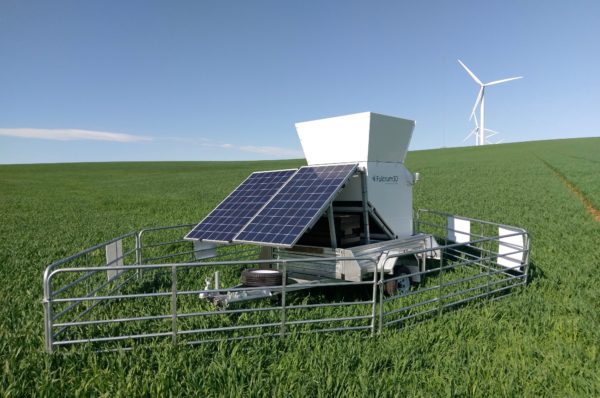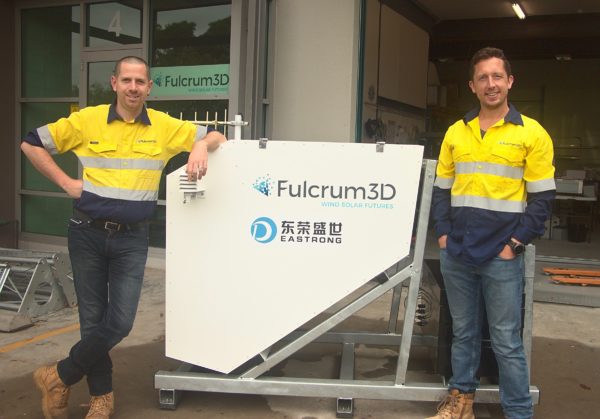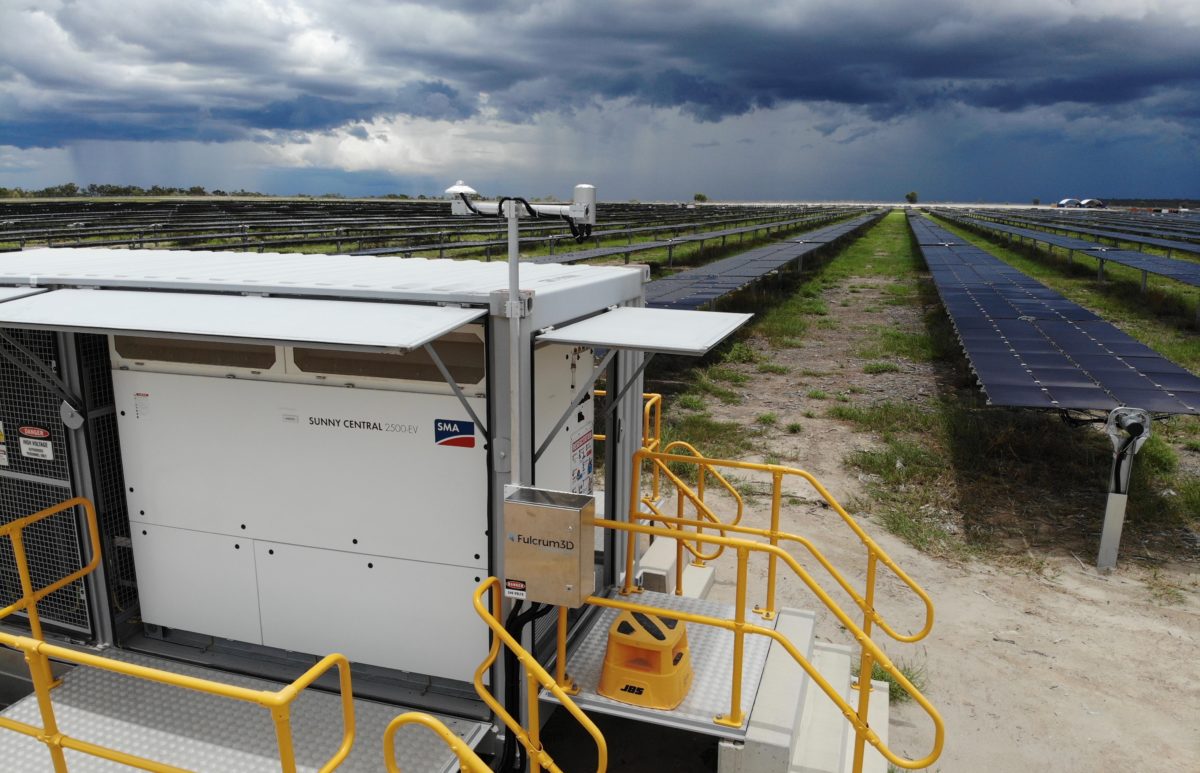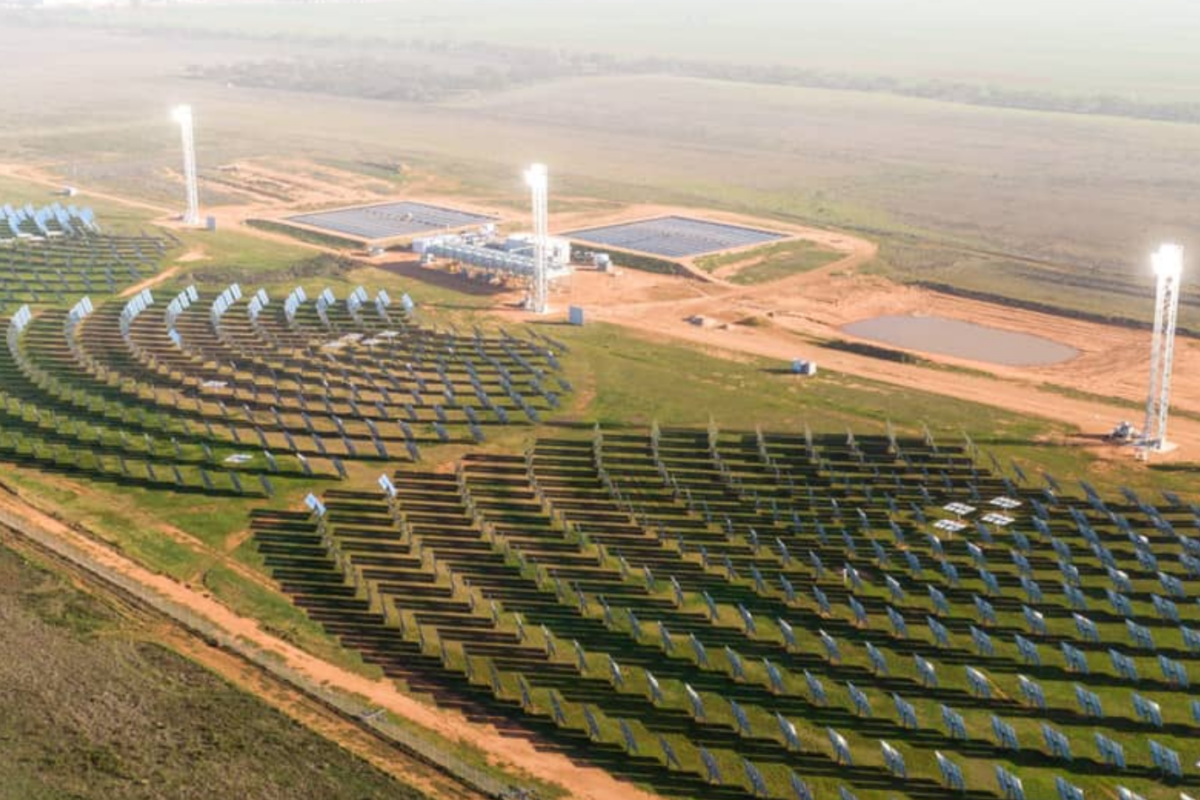pv magazine Australia: Fulcrum3D provides technical solutions for remote measurement and forecasting in the utility-scale renewable sector, particularly wind and solar. Why is reliable data so important?
Jo Hume, Fulcrum3D General Manager: Reliable data is essential for effective project design and management – from both a technical and financial point of view. Accurate resource assessment for wind and solar energy developments is critical for bankability and risk management and for ensuring optimal power plant design. Bankers and asset owners do not welcome unpleasant surprises around project yield once the project is built. Accurate ground-based solar resource assessment is proving to generate more accurate yield assessments than satellite-based assessments.
Accurate wind resource assessment is equally essential for the same reasons. We are also finding that optimal turbine siting can have a very significant impact on yield. Adjusting a turbine location by as little as 100m can have a significant impact on yield – and not just related to locating turbines on higher ground. Resource assessment at multiple locations on a prospective wind farm site is therefore critical. Reliable data at the energy plant operational phase is, of course, fundamental to good asset performance management. Is each part of my plant performing as well as it should be? Are there opportunities for optimising that performance?

Image: Fulcrum3D
And this ground-based resource is called CloudCAM? It detects nearby clouds, measures cloud cover, and predicts future cloud location with up to 15 minutes notice. What kind of advantages can this provide for the grid and renewable integration?
CloudCAM has applications in microgrids and utility-scale grids. It has been successful in providing spinning reserve management and ramp rate control on Northern Territory solar-diesel microgrids for over four years. These microgrids can have over 80% solar penetration during the day, and so a cloud event at these times can reduce the PV output so rapidly that the diesels are not able to ramp up fast enough, resulting in in an inability to maintain the required grid frequency. CloudCAM “sees” the cloud coming and ramps down inverters at a rate that allows the diesels to take up the load without frequency excursions.
Batteries were performing the ramping function but the rapid cycling was shortening their life, and therefore requiring frequent, capital intensive replacement. Interestingly, the minor PV curtailment resulting from the pre-emptive inverter ramping has been more than offset by avoiding the roundtrip losses associated with battery charge and discharge. And so now it is widely accepted that ground-based cloud sensing equipment is required for accurate short-term solar forecasting (less than fifteen minutes).
And as for the utility-scale end, well, CloudCAM is able to provide the Australian Energy Market Operator (AEMO) with more accurate five-minute forecasts and avoid the penalties (Causer Pays charges) associated with power plants not meeting the AEMO generated forecasts. The AEMO forecasts cannot always be accurate because they do not have access to real-time, ground-based power plant and environment data.
This takes us to the Fulcrum3D solar monitoring system, based around the DataVOLT high-speed data logger platform, a technology capable of highly accurate solar power measurement and data delivery. What advantages does this provide to large-scale solar generators?
As discussed above, accurate reliable data is crucial and DataVOLT is a flexible, robust and accurate logging system that can integrate with multiple SCADA vendors and other systems. And it is complemented by FlightDECK, our secure web-based data storage, recovery and visualisation system. DataVOLT systems have been operating in Australia’s harshest conditions (from +50oC and dust storms to snow conditions and floods) for over seven years.
Australia is experiencing serious issues of grid integration causing a backlog of renewables. Can Fulcrum3D’s tech help aid the entry of solar and wind into the grid as Australia transitions to clean energy?
Yes.
One of the key causes of delay in the current project development process is securing grid connection approval, a process that requires a demonstration of system strength. Accurate short-term forecasting will improve system strength by giving the market operator more time to procure raise and lower services.
It is therefore not surprising that Fulcrum3D won funding from ARENA and AEMO to demonstrate its solar and wind forecasting technology on almost 300 MW across four states, including Genex’s Kidston 1 Solar Project, how did the trials progress?
The trials have been very successful. We have reduced average Causer Pays by over 80% at Kidston Solar Farm. This would deliver a payback of well under one year, and we continue to work on improvements (the trial ends in October this year [2020]).
Our wind forecasting trial with Pacific Hydro is also successful with excellent savings at Clements Gap wind farm.
Through self-forecasting tech such as Fulcrum3D, ARENA and AEMO are seeking to reduce frequency control ancillary services (FCAS) charges to generators. What are FCAS and is Fulcrum3D the answer the industry is looking for?
We are very excited about the effective solution that we have developed. It is a real thrill to aid the renewable energy transition by reducing the cost of generation for wind and solar farms.
As discussed above, our short-term forecasts are reducing the ’Causer Pays’ penalties that relate to the cost of the market operator (AEMO) procuring the ’Regulation Raise’ and ’Regulation Lower’ components of the frequency control FCAS services. AEMO use their own forecasting engine to generate ’dispatch targets’ for the wind and solar farms. The AEMO forecasts cannot always be accurate because they do not have access to real-time, ground-based power plant and environment data.
In a presser about the short-term forecasting trial, if I may quote here, AEMO and ARENA said: “AEMO is currently responsible for forecasting how much electricity will be generated by wind and solar farms, the output of which varies depending on the weather and time of day. If these supply forecasts are wrong or generators can’t meet their target, it can result in power system instability and higher operating costs. Wind and solar farms are penalised for not meeting a required output level or can be required to curtail their generation to match an overly conservative forecast. Under the market changes that AEMO has facilitated as part of this initiative, all wind and solar farms registered in the NEM will be able to submit their own 5-minute ahead forecasts to AEMO, for use in central dispatch to improve the accuracy of market outcomes. The ARENA-funded trial will be exploring the benefits that this new capability brings to the system…”
We at Fulcrum3D congratulate ARENA and AEMO on the trial and are delighted that the trial benefits have been so material. We would also like to acknowledge the invaluable contribution of our project partners – Genex Energy and Pacific Hydro.
It seems that the future of self-forecasting is one of clear-skies then, the future is a self-forecasting future?
Yes – we believe so. Self-forecasters are able to provide more accurate forecasts because they have the real-time data, plant understanding and motivation to do so.
What is the most exciting prospect Fulcrum3D sees in the solar/renewable industry over the next 5-10 years?
Increasing renewables penetration without compromising grid stability. The industry now has many tools (forecasting, storage, synthetic inertia etc.). A well planned and stable transition is possible and good data is going to be key.
What’s next for Fulcrum3D?
We are very excited about the future and continuing to deliver trusted data to make wind and solar power better. Our R&D team of engineers and data scientists is continuously improving our modelling and understanding of power plants and their interaction with the grid and the natural environment. This helps wind and solar companies to reduce the effective cost of their power generation.
On top of that, we have improved the accuracy of our Fulcrum3D wind monitoring at higher heights for resource assessments. Our international sales are growing, and we are proud that we are creating quality Australian jobs with home-grown technology.

Image: Fulcrum 3D
This content is protected by copyright and may not be reused. If you want to cooperate with us and would like to reuse some of our content, please contact: editors@pv-magazine.com.









4 comments
By submitting this form you agree to pv magazine using your data for the purposes of publishing your comment.
Your personal data will only be disclosed or otherwise transmitted to third parties for the purposes of spam filtering or if this is necessary for technical maintenance of the website. Any other transfer to third parties will not take place unless this is justified on the basis of applicable data protection regulations or if pv magazine is legally obliged to do so.
You may revoke this consent at any time with effect for the future, in which case your personal data will be deleted immediately. Otherwise, your data will be deleted if pv magazine has processed your request or the purpose of data storage is fulfilled.
Further information on data privacy can be found in our Data Protection Policy.